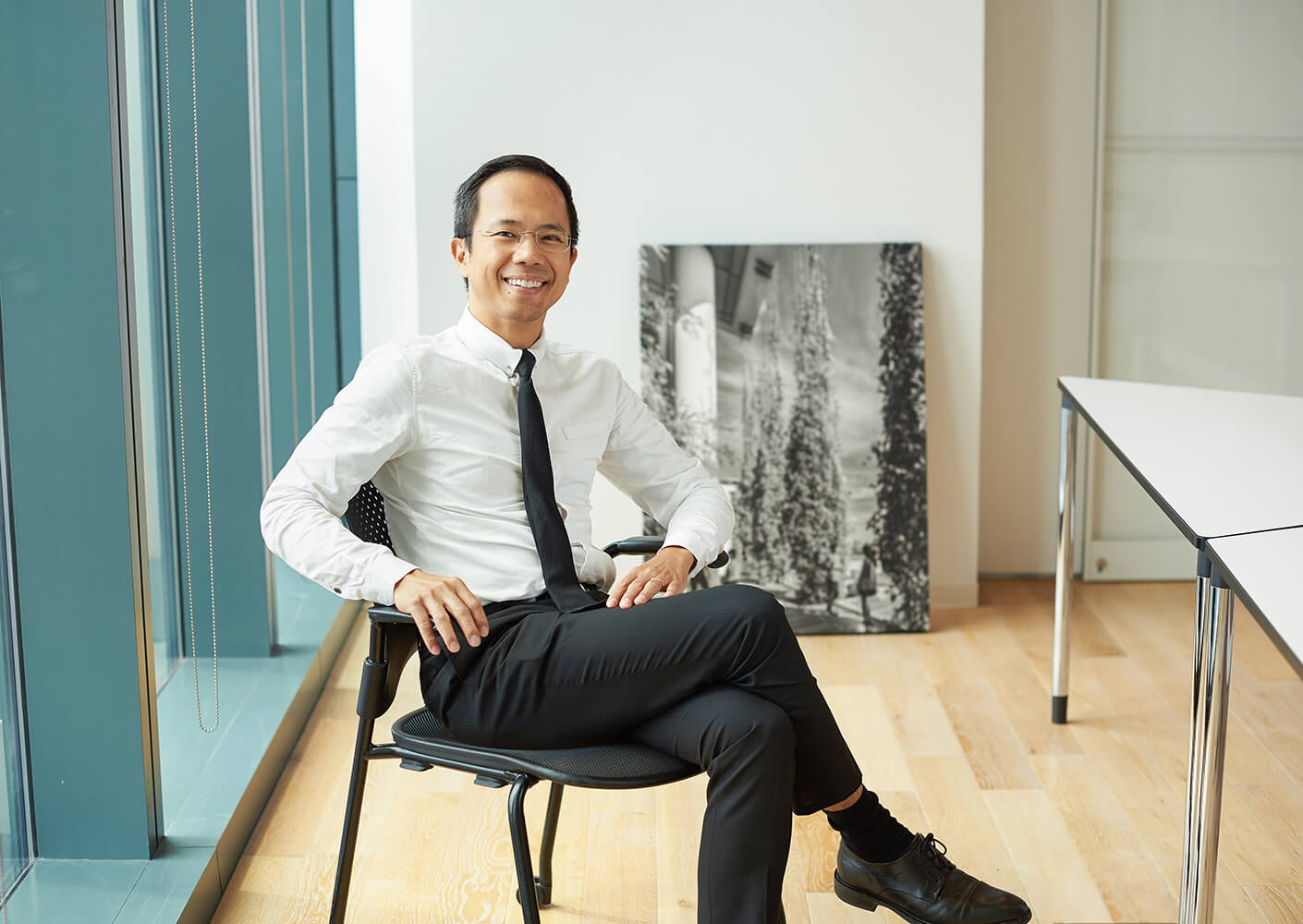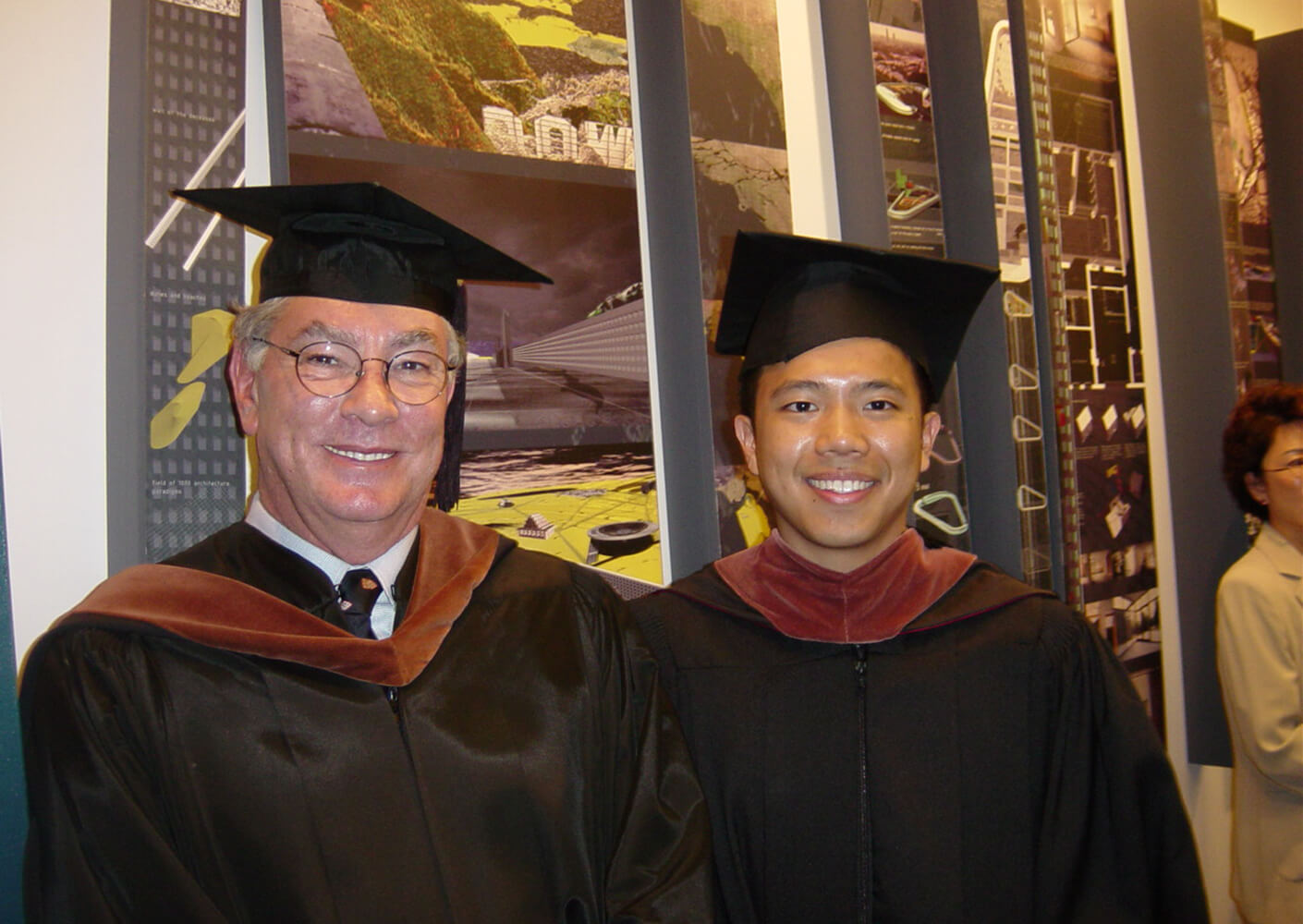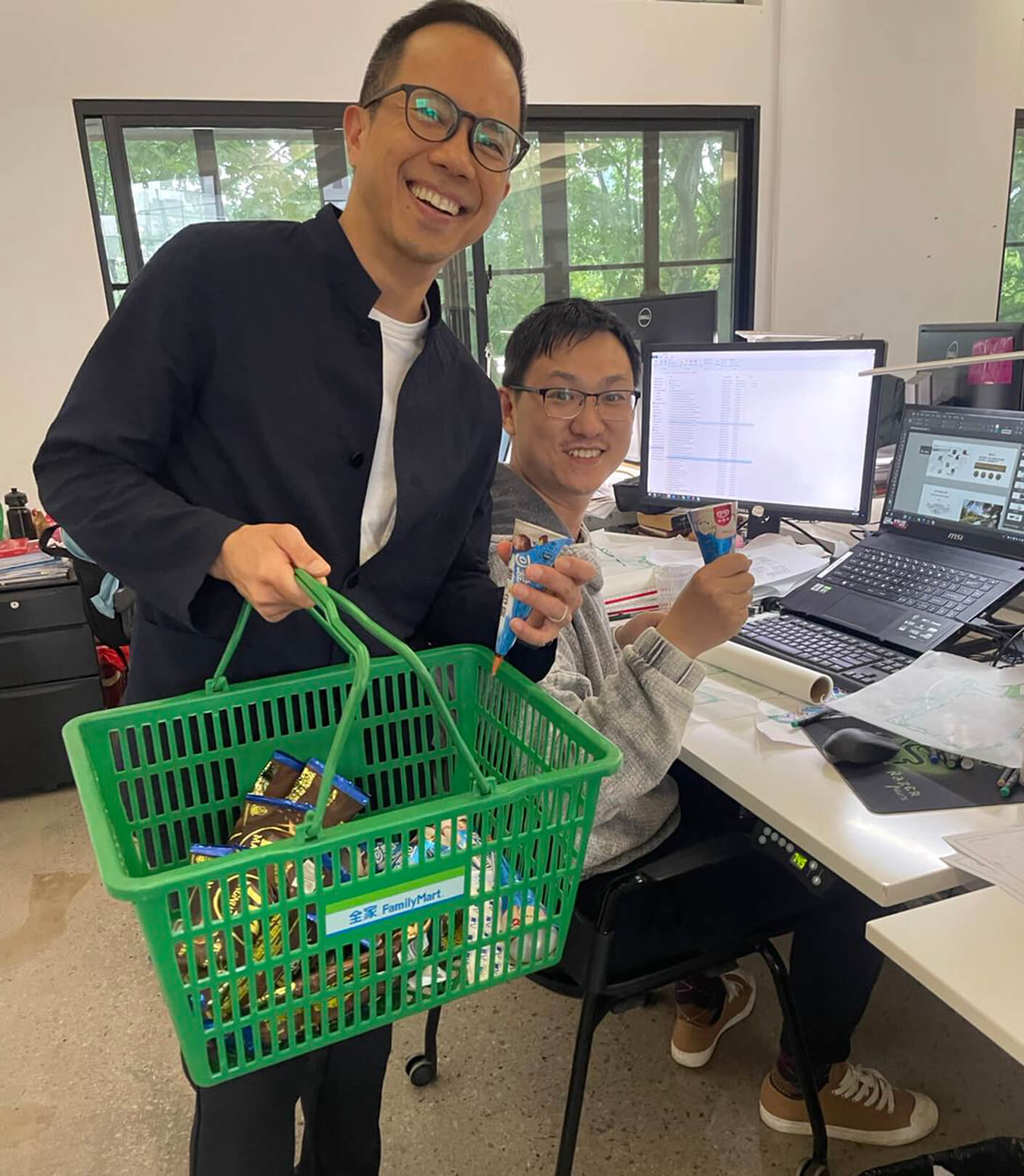Conversations with Colleagues: James Lu


Q: What drew you to the design profession, and what’s keeping you here?
A: As an immigrant child in Canada, I never thought I would become an architect. But I have always liked art, history, and literature, as well as making models. As a result, choosing to study architecture was natural because the comprehensive discipline combines engineering and art—a unique dual challenge I enjoy.
My understanding of architecture evolves with time and experience. When I was an architecture student, my dialogue with architecture was more about me, and about what I wanted to create. Now, with a broader view, I am drawn to design issues that impact society and people’s lives: I am filled with optimism about the positive role design can play in people, city, and the world.
I joined Perkins&Will eight years ago with the mandate to transform a 10-person office into a fully functional studio. Now, our Shanghai studio has more than 80 creative minds working on very exciting projects across different sectors. It has been amazing to witness the growth of the studio and its transformations, and I have been very blessed to work with so many talented people along the way. Their creativity, passion, and our culture of design and teamwork keeps me excited about my work every day.
Q: In what ways do you feel your work is contributing to diversity, inclusion, and engagement in broader society?
A: The context of inclusion is a bit different in China, and non-Chinese internationals have historically been the minorities. In our projects, though, we have many opportunities to support these internationals and their families during their time in China.
One example is the recently completed project for the American International School of Guangzhou (AISG). As the first international and non-profit school in southern China, the school started by providing education for U.S. Children only, but over time, it grew to also include children of all different nationalities. Many of these children would finish high school in China and then return to their home country for university education.
The goal of this project was to help these international children growing up in China receive an educational experience similar to that of their home country. So, when they return one day for university, they can seamlessly integrate into the campus life and the social environment.
One big challenge we have is to prepare the students for the future university education. The role of higher ed is quickly evolving, but we have designed this school to support the newest pedagogy of 21st century learning to help students to be future-ready. The design offers an open learning environment that promotes collaboration and group works. It offers maker spaces and open labs that allow students to learn by doing. It has an iconic central hub that fosters sense of community and brings together students and teachers. As a collaborative effort with the school faculties, our design will help these students to transition smoothly back to their own country one day, while at the same time, be prepared for a fast-evolving future.

Q: Describe a design project you’re working on right now, whether professional or personal, that you’re especially proud of—and why.
A: I am a Christian and I attend an international church in Shanghai. Over the past few years, my family and I have been visiting and aiding communities in need in Nepal, together with our church friends.
After we returned from our last visit at the beginning of 2020, we started to fundraise and design for a new orphanage. Our funding came purely from donation, so budget was a critical consideration: not an unfamiliar design constraint for us, but much more intensified. We have been much more careful in our thinking about how to design using local materials and techniques, so we can save money on construction but at the same time create a welcoming, warm, home-like environment for the orphans.
We also have looked at specific strategies to help the orphanage to become more self-sufficient. For example, our design includes many vegetable gardens where they can grow their own food, as well as simple active and passive building green strategies like natural ventilation, sunlight, and rainwater collection to help save daily operational costs in the future. We understand the orphanage not only needs a physical shelter, but a sustainable future.
Q: In what positive ways have your experiences at Perkins&Will changed you, personally or professionally, and/or your outlook on the world?
A: Before joining Perkins&Will Shanghai as the Managing Director, I was a Lead Designer focused purely on projects and design. Now, my focus is helping individuals and teams to grow, supporting them to realize their full potential and dreams. I see my role as a mentor, but I also do learn a lot from them. I love interacting with our talents, hearing their thoughts and aspirations, and helping them to achieve success. It brings me so much joy.
